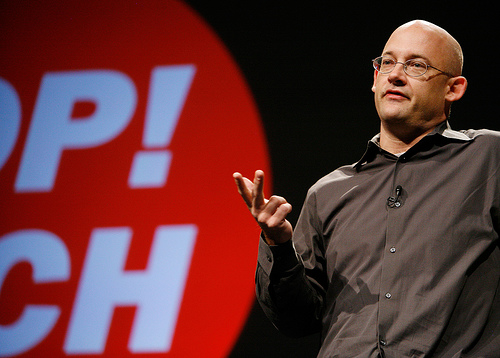Re-envisage event technology to significantly improve your events
We need to re-envisage event technology to significantly improve our events.
Revolution doesn’t happen when society adopts new technologies—it happens when society adopts new behaviors.
—Clay Shirky, Here Comes Everybody: The Power of Organizing Without Organizations
I feel irritated when I see so many event professionals focusing on “new” event technology while ignoring existing technology that, in many cases, could greatly improve their events at a fraction of the cost.
There, I said it.
Every year there are plenty of conferences where you can go and see the latest and greatest mobile and gamification apps, attendee tracking systems, registrant analytics, mobile networking, video streaming platforms, etc. Vendors are happy to sponsor these events. They use them to showcase their wares and, hopefully, convince attendees that their new technology is worth buying.
Let me be clear—I have nothing against new technology per se. (If I was I’d be a hypocrite, given that I spent twenty-three profitable years as an information technology consultant.) What’s sad is that too much of event professionals’ limited continuing education time is spent investigating shiny new toys and apps while overlooking inexpensive and proven ways to provide effective learning, connection, engagement, and community building at their events.
Why does this happen? Here are two reasons:
We fixate on the new
“Technology is anything that was invented after you were born.”
—Alan Kay, from a Hong Kong press conference in the late 1980s
We are enveloped by so much rapidly changing technology that we fixate on what is new.
What was new quickly becomes taken for granted and largely invisible. As David Weinberger remarks: “Technology sinks below our consciousness like the eye blinks our brain filters out.”
Although technology in the form of human tools has existed for over three million years and we’ve had books for over half a millennium, the first history of technology wasn’t written until 1954. Flip charts, 5×8 cards, comfortable seating, room sets, healthy food and beverage, and hand voting have been around for a long time. They are old-fashioned technology to event professionals, so we don’t pay them much attention (unless they can be reframed in a sexy way, e.g. “brain food”). But that doesn’t mean they’re not important. Far from it.
Technology isn’t just manufactured goods and software
Our definition of what is and isn’t “technology” is far too narrow. We tend to think of technology in terms of products and embedded implementations (e.g. software). But this is an incredibly restrictive viewpoint. Kevin Kelly, in his thought-provoking book What Technology Wants, lists three of the most important human technologies:
- Language: A technology that “shifted the burden of evolution in humans away from genetic inheritance…[allowing] our language and culture to carry our species’ aggregate learning as well.”
- Writing: A technology that “changed the speed of learning in humans by easing the transmission of ideas across territories and across time.”
- Science: “The invention that enables greater invention.”
Once we start thinking about technology with a wider lens like this, all kinds of possibilities arise.
Re-examine process—and re-envisage event technology
Language, writing, and science are outside our conventional, narrow-scope technology. The conventional technology we use to instantiate the sounds, symbols, etc. that they use is secondary. Language, writing, and science are primarily about human process.
When we expand our perspective on event technology to include process, many unexamined aspects of our events come into view. A few examples:
- Why do we open conferences with a keynote?
- Why do so few people speak during conference sessions?
- How do we know if the sessions we’re providing are what attendees actually want?
- Why do we provide entertainment during socials?
- Are socials the best way to meet other attendees?
- Why do we close conferences with a keynote or dinner?
When you start honestly investigating issues like these, instead of simply repeating things the same “safe” way you’ve previously experienced at conferences you’ll discover all kinds of human process technology that can fundamentally improve your event in ways that a new gizmo or app cannot.
So I urge every event professional to re-envisage event technology to include the process used during your events. Concentrate less on improving logistical processes: registration, decor, A/V, F&B, and so on. These are secondary processes, and we know how to do them well. Instead, focus on improving the human process you use throughout the event venue and duration. How you
- structure and script its flow;
- maximize useful connection between attendees; and
- determine the content and form of sessions.
This is the event technology that counts.
Photo attribution: Flickr user pierre-francois




